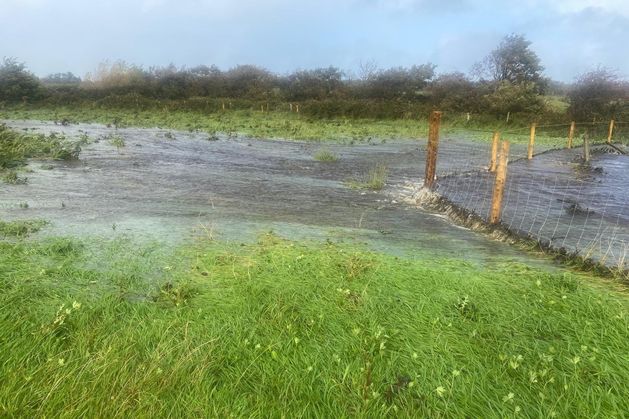A local committee claims it has gathered evidence of inadequate drainage, missing silt traps and potential harm to the Heathfield River and its aquatic life at Coillte’s Carrownisky afforestation site,
Heavy rainfall from Storm Amy has reinforced concerns that the project poses a serious threat to local waterways and biodiversity.
During Storm Amy on Friday, October 3, committee members gathered photographic and hydrological evidence, which they say demonstrates that the 12.66-hectare site is flood-prone and hydrologically connected to the nearby Heathfield River.
The committee claims that extensive new conduits have been excavated on the site without any vegetation, potentially in violation of afforestation rules.
When conduits are left unvegetated, rainwater can wash away soil and pollutants, leading to erosion and harm to nearby waterways.
Additionally, the committee says it found inappropriate drainage works and an absence of silt fencing and sediment traps, all of which they say are in direct breach of the mitigation measures set out in the accompanying ecology report for the project.
The group is now calling on the relevant authorities to carry out an immediate investigation and enforcement review into the project, and suspend or revoke the current license until full compliance with environmental legislation and mitigation standards can be guaranteed.
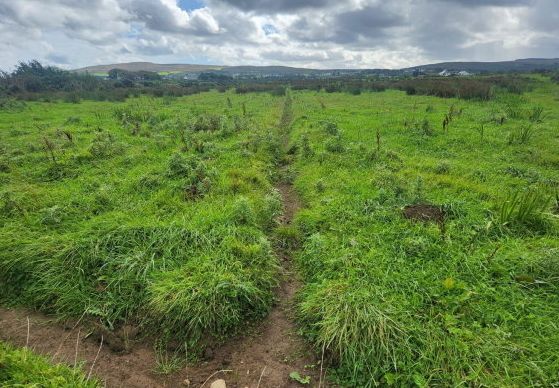
The Carrownisky site before Storm Amy, showing a newly created conduit that the committee said posed a threat to the river if left exposed. Photo: Ballycastle Stop the Forestry Committee.
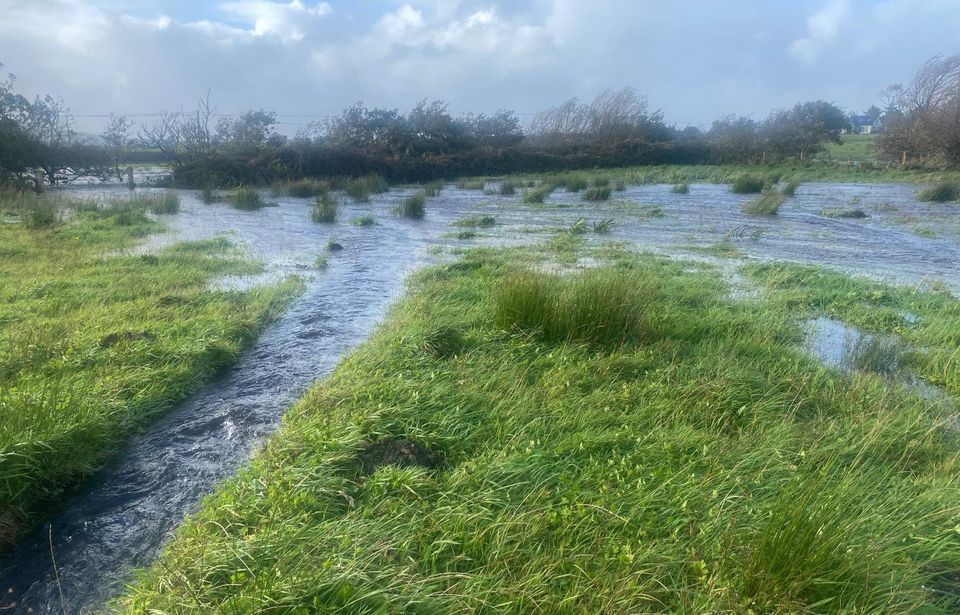
The Carrownisky site following Storm Amy, showing floodwater levels almost reaching the dug conduit. Photo: Ballycastle Stop the Forestry Committee
In a detailed statement, the committee says the proposed afforestation, which will consist primarily of non-native Sitka spruce, presents “a clear and serious environmental risk” to the Heathfield River and its wider catchment and will “exacerbate local flooding, sedimentation, and acidification of the Heathfield River.”
They reported that during the storm, water overtopped and burst the riverbanks, flowing at speed across the proposed planting area and disturbing freshly dug sediment and potential pollutants, which then entered the river. The committee described this as “an immediate and significant threat to water quality, sensitive aquatic life and biodiversity.”
The Heathfield River is classified by the EPA as a “Good Status” watercourse and supports species such as Atlantic salmon, brown trout, and European otters. The committee now fears runoff and sediment from the site could damage water quality and habitats.
They also noted with “grave concern” that the required setbacks from the Heathfield River have not been respected and that no silt fencing was in place during the flood event, despite works already altering the land’s drainage and exposing large amounts of loose sediment.
According to the group, the works carried out so far amount to non-compliance with environmental commitments. Their evidence points to a high likelihood of ongoing runoff, nutrient build-up, and sediment being deposited into nearby waterways.
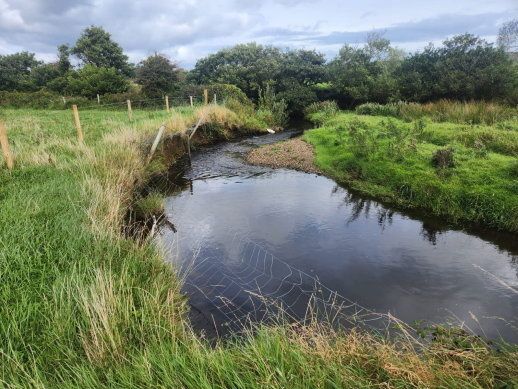
Heathfield River before Storm Amy – the committee state that fish were seen in the river on this day and it was in good condition. Photo: Ballycastle Stop the Forestry Committee.
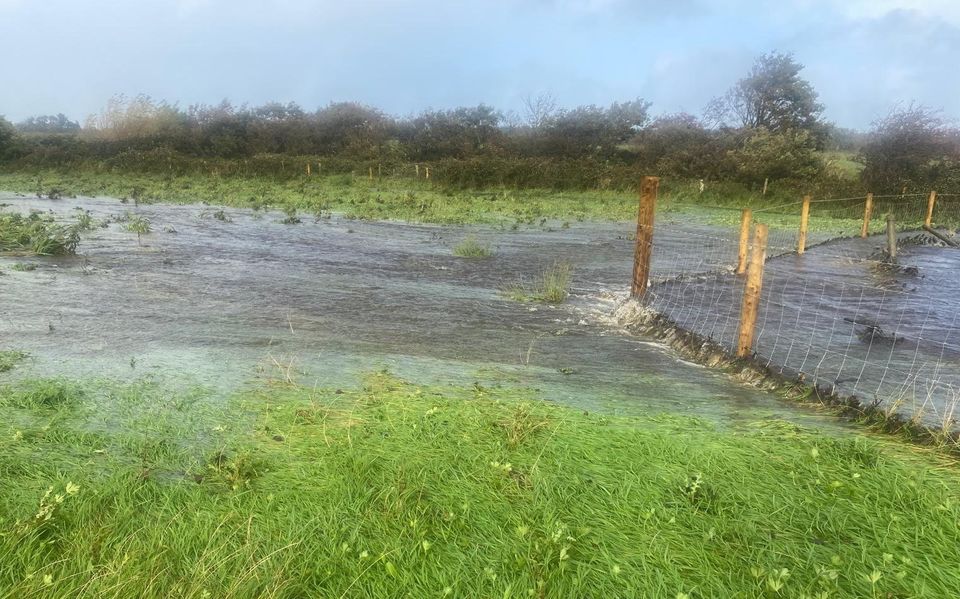
A photo taken after Storm Amy showing how the river has burst its banks and flooded the land. Photo: Ballycastle Stop the Forestry Committee.
The committee claims that the works at Carrownisky breach several environmental regulations, including the EU Water Framework Directive (2000/60/EC), the Forestry and Water Quality Guidelines of the Department of Agriculture, Food and the Marine (DAFM), and the the European Communities (Birds and Natural Habitats) Regulations 2011 (S.I. No. 477/2011); all of which require the protection of aquatic ecosystems and prohibit deterioration of water status.
They believe the evidence gathered shows the site is unsuitable for afforestation and that if the project proceeds, it will “exacerbate local flooding, sedimentation and acidification of the Heathfield River,” particularly after storms or periods of heavy rainfall.
The land at Carrownisky, just outside Ballycastle village, was purchased by Coillte for commercial forestry and licensed by the DAFM under licence CN92081.
The project, which will see 80pc of the area planted with Sitka spruce and 20pc with native broadleaf trees, has faced strong opposition by the local community for over three years, for multiple reasons.
Residents argue that it will damage the environment, obstruct views along the Wild Atlantic Way, and negatively affect the nearby Tom Langan GAA Park, Ballycastle’s only sporting facility.
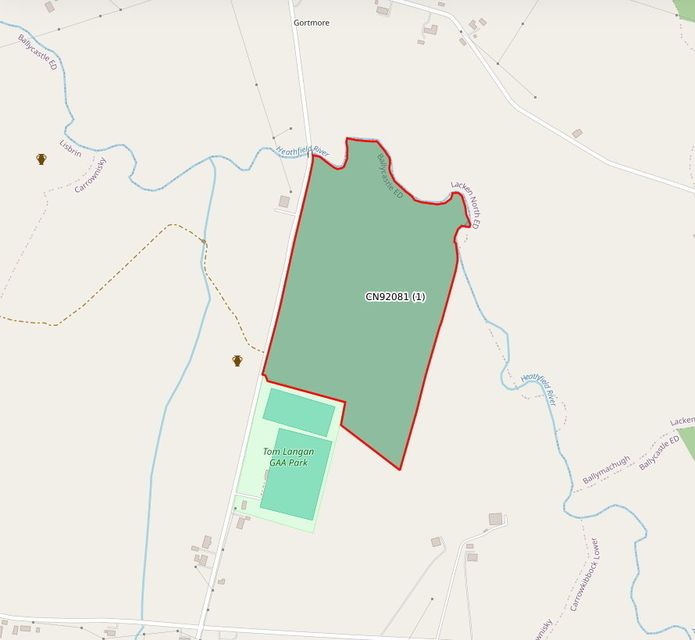
Plans outlining the 12.66-hectare forestry plantation, showing the Heathfield River to the north and the Tom Langan GAA Park to the south of the site. Photo: Forestry License Viewer.
The forestry licence was temporarily suspended in 2024 following residents’ appeals, but was reinstated by the Forestry Appeals Committee (FAC) last December.
Coillte has previously stated that the licence application process included a detailed environmental assessment to ensure the establishment of the new forest is fully compatible with locally important wildlife and habitats.
“Coillte purchased this site for the purposes of afforestation. The Department of Agriculture, Food and the Marine approved this project and issued an afforestation licence that was subsequently appealed. The Forestry Appeals Committee heard the appeal and substantiated the original afforestation licence, so Coillte proceeded to plant the site.”
However, the committee says the latest flooding event has changed the picture, revealing new risks not previously accounted for.
In response to the committee’s statement, a spokesperson for DAFM said: “The proposed afforestation project in Carrownisky, Co. Mayo was assessed by the Department, licensed, appealed to the Forestry Appeals Committee (FAC), and then affirmed by the FAC.
“The Department understands that the planting works have started, but are not completed on site. The Department takes all allegations of environmental non-compliance seriously and will be investigating the matter.”
This article has been funded by the Local Democracy Reporting Scheme.

